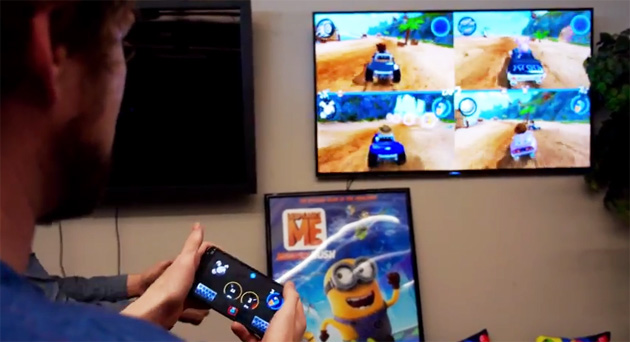1. Elance
Elance is one of the best websites to look for freelance work of all types. Programmers, designers, writers, IT professionals, translators, attorneys, financial advisers – everyone is welcome and there is plenty of work to go around. You can set up a profile fairly quickly and charge an hourly rate or have a set price for each individual project and you get rated depending on how well you do.
2. Freelancer
It’s been around since 2004 and it has a large following. It’s a place where services are outsourced to freelancers in a number of fields including: web design, writing, marketing and data entry among other things.
3. Guru
Guru.com is a fairly large network that connects companies and freelancers. As stated on the website they are interested in work on “technical, creative or business projects”, so there is plenty of opportunity for all types of freelancers from programmers and game developers to translators, engineers and attorneys.
4. iFreelance
iFreelance is a very wide freelance network with categories that include photography, videography, marketing, traditional art, writing, translation, architecture, engineering, graphic design, accounting and administrative support. It’s easy to set up an account and start looking for a project you can contribute to.
5. People per Hour
Create an appealing profile, look for jobs, send proposals and make a short video promoting your services. It’s all very straightforward with PeoplePerHour.com – you find a client, provide a quality service and get rated.
6. Tuts Plus Jobs
This is a great job board for programmers, designers and developers, as well as copywriters and editors. It has a user friendly interface and allows you to quickly find and apply for jobs best suited to your particular skill set.
7. ProBlogger
An excellent job board for talented writers, ProBlogger makes finding the right writing opportunities incredibly simple. Just click on the job listings you want and follow the instructions.
8. Freelance Writing Gigs
This is another great website for all the writers out there. Posting an ad will cost you around $10, but it will give you a chance to showcase your writing skills and provide content to those willing to pay for your efforts. You can also contribute to their blog and get some additional exposure by linking to your blog/website and social media accounts.
9. SmashingJobs
This is a designer’s and programmer’s heaven, offering plenty of full-time and freelance job opportunities. The website has a very clean and crisp design which allows for quick browsing and some efficient job hunting.
10. Odesk
Set up an account and choose from 75 different job categories and plenty of offers within each category. The thing with oDesk is that there is no invoicing involved – your work is tracked automatically and you receive payments on a weekly basis depending on how much time you spent on various projects. Some of the main categories include writing and translation, software development, web development, marketing and design.
11. Fiverr
Sell your services starting at $5, that’s the tagline and it is quite accurate. You can offer basically anything you can think of – write and perform a poem, create DIY projects or promotional videos, etc. Some basic categories are writing and translation, online marketing, video and animation, music, programing and graphic design.
12. Freelanced
This is a freelance social network where a large number of people with different kinds of talents and skills can come together, share their portfolios and look for some online work. There are a huge number of job categories ranging from creative writers, sculptors and music composers to accountants and programmers.
13. Freelance-Writing-Jobs-Online
A variety of fields to write about, ranging from mathematics and physics to biology and medicine. To sign up you need to fill out a form and wait for a confirmation email. Upon receiving the email you may take a competency test and be on your way to earning some money.
14. Pitch me
A freelancer with some experience in journalism will feel right at home on this website. Ideas are pitched on various topics – fashion, science, culture, etc – and you can pitch as many ideas as you like. If someone likes what you have to offer, they can than pay you to write it, it’s as simple as that.
15. Text Broker
This website provides talented writers with a very effective way of getting paid for doing what they do best. You start by creating a free account and completing a competency test after which you will be rated. Then, if all goes well, you can complete your author profile and start looking for writing assignments that suit you.
16. Art Wanted
Artwanted is the perfect place for artists and photographers to create an online portfolio, get feedback and sell their artwork online. Registration is free, but there is a $5 per month premium membership option that grants you access to some good bonus features.
17. 99designs
This is a website where over 281,579 designers from 192 different countries can connect to potential clients and showcase their work. A client gives information about his business and a rough idea of the type of logo he wants. Then the designers send in their work and the client can pick out the one he likes best. You look for design contests, enter the ones you like and do your best to win. As you win more contests your status will improve and you will get more opportunities.18. Simply Hired
This is a big and broad job hunting website with tons of options, but it is a great way to look for some freelance work, particularly if you are a writer, graphic designer or web designer. It’s very easy to navigate and you can quickly search through a large number of recent job offerings in your field.19. Tutor
As the name suggests you can become an online tutor for families with home-schooled children, children in military families and even schools. There are a number of subjects and different grade levels to choose from, so if you have a deeper understanding of a subject such as math, English or science, than you can go through a few simple steps. You have to fill out an application form, pass a subject exam and deliver a writing sample, perform a mock session to test your teaching skills and go through a background check before you can start working.
20. Authentic Jobs
A well-designed and straightforward job board, AuthenticJobs.com allows you to filter out categories you are not interested in and apply for freelance jobs in different fields. The main focus is on web development, web design, application development, project management and UI design.
I hope you find this information useful and that you succeed in your freelance career. Just remember to be patient and to keep looking. It takes time to see some serious results, but freelancing can be a fulfilling career once you get pass the initial stages.


















